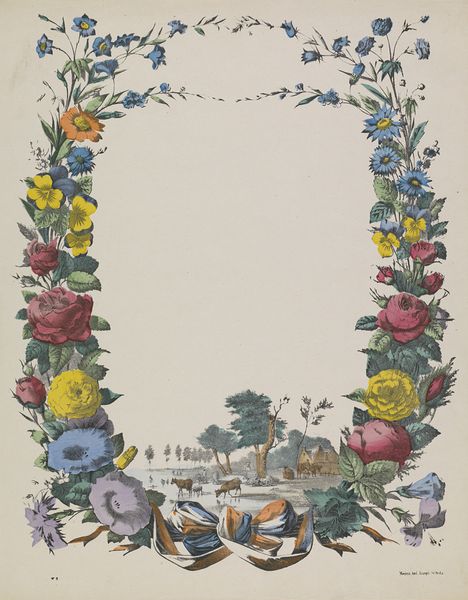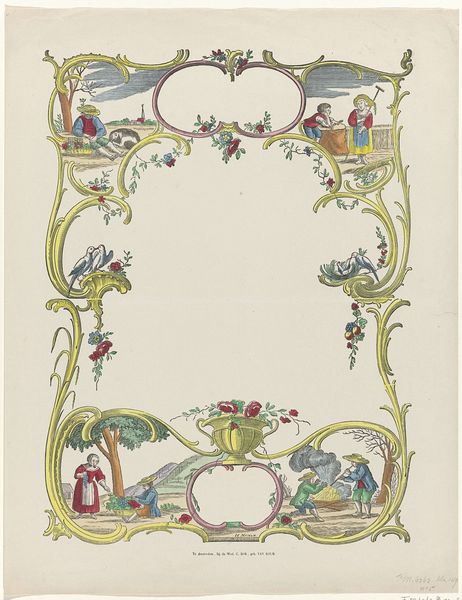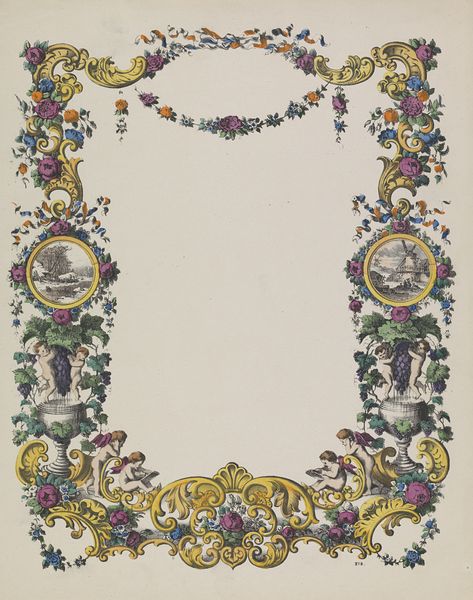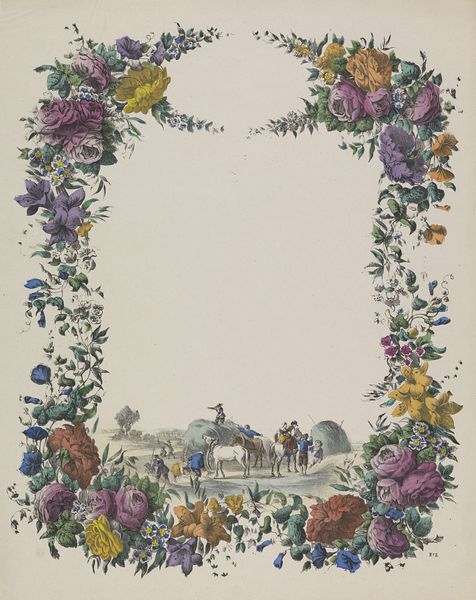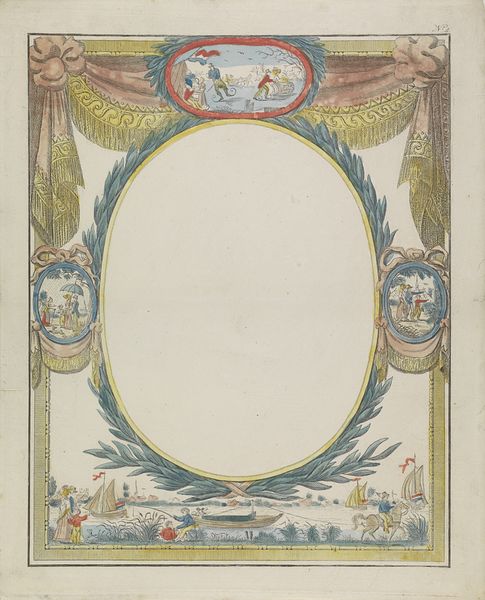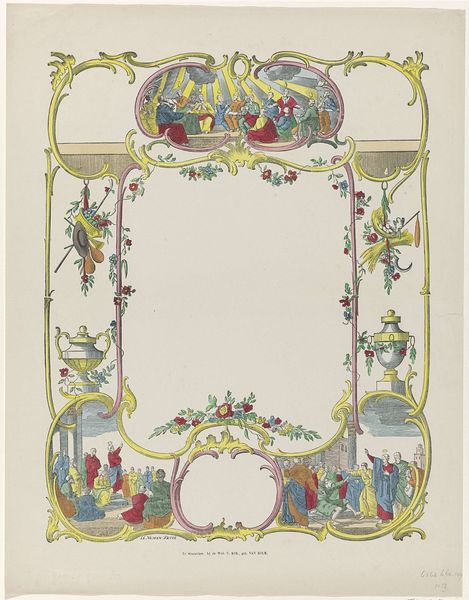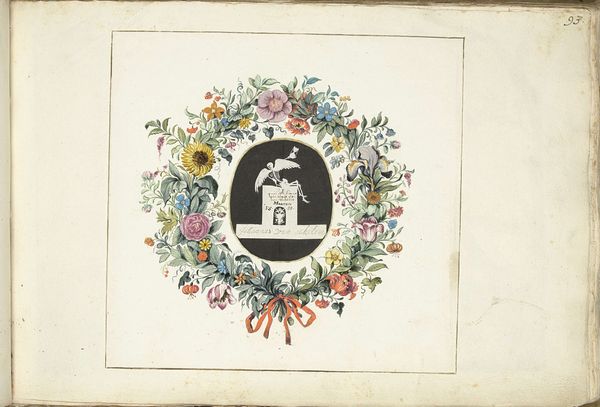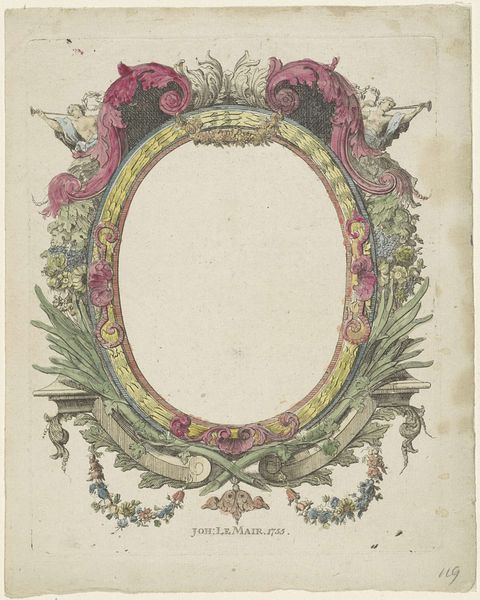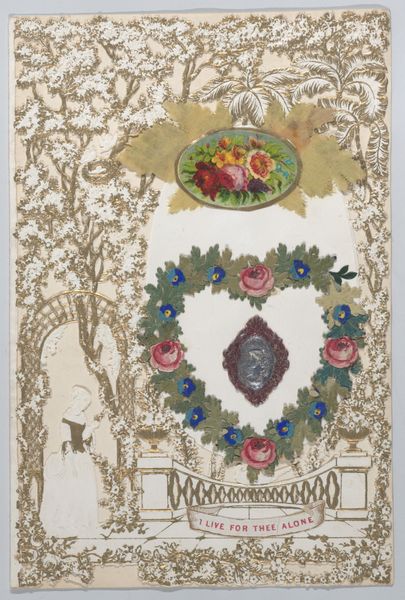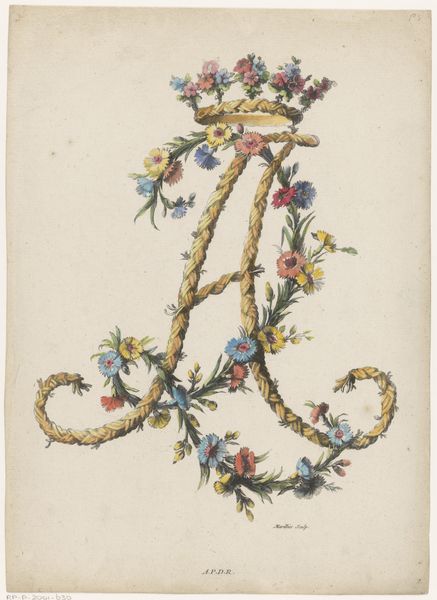
Dimensions: height 421 mm, width 336 mm
Copyright: Rijks Museum: Open Domain
Editor: Here we have "Wensbrief met bloemenkrans en een hooiwagen," or "Wish Letter with floral wreath and a hay wagon," dating from sometime between 1829 and 1880, currently held at the Rijksmuseum. It’s by an anonymous artist and created with watercolor. It has such a sweet, ornate feel... How would you interpret a piece like this? Curator: The materials and its construction are central here. Watercolors allowed for delicate detail and layering, mimicking the naturalism sought in botanical illustrations of the time. Notice how the labor is almost invisible. The flowers suggest a constructed nature, hinting at the control exerted in both artistic creation and cultivation practices of the era. Editor: So, you’re saying that the way the artist *made* the work, and the actual watercolor itself, is what gives the piece its meaning? Curator: Precisely! The material processes are reflective of broader social values. Decorative arts such as this blurred the boundaries between fine art and craft, elevating what were considered ‘feminine’ pastimes. And consider the function of a "wish letter.” What social rituals and customs went into its creation, distribution, and consumption? What materials – paper, ink, watercolor – were deemed valuable enough to construct it? Editor: So, the letter's material value and the labour involved, even by an anonymous artist, speaks volumes about its place in society. Curator: Exactly! Each element points towards a carefully constructed world. Its value lies not just in its aesthetics but also in the web of social connections it represents through production, exchange, and sentimentality. What are your final thoughts? Editor: I never really considered how much a simple watercolor could reveal about its time. It's fascinating to think about it as both art and artifact!
Comments
No comments
Be the first to comment and join the conversation on the ultimate creative platform.
